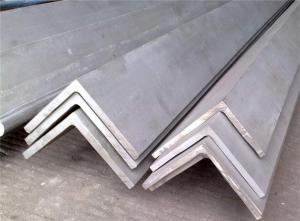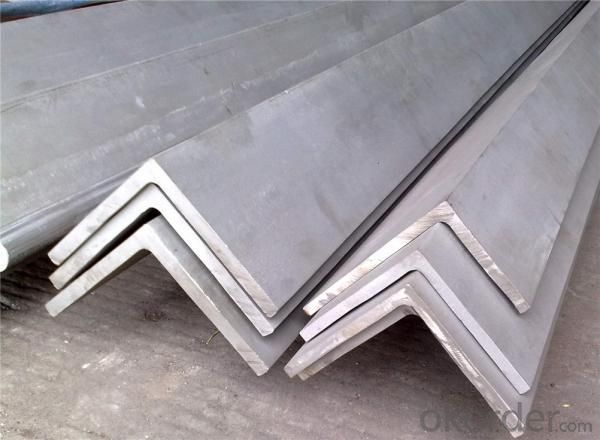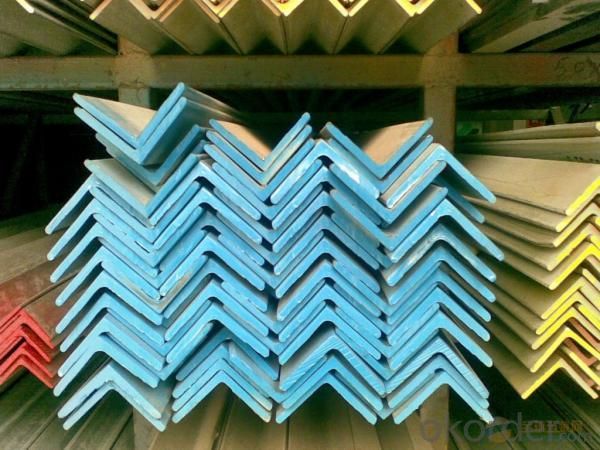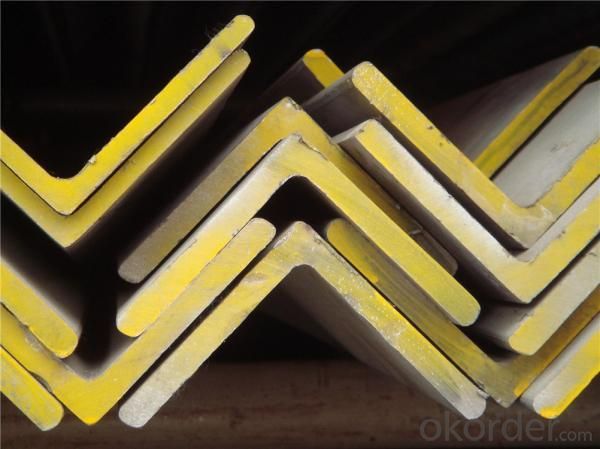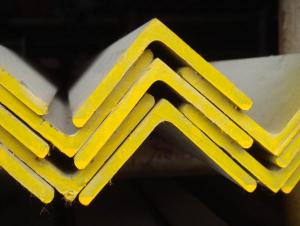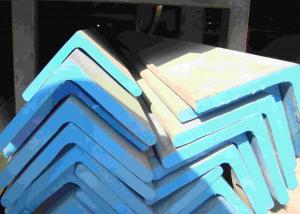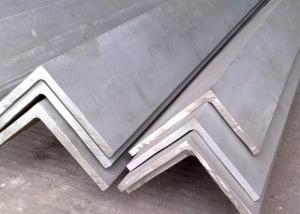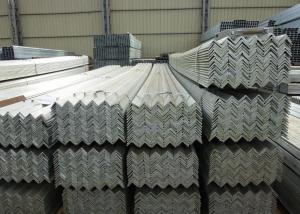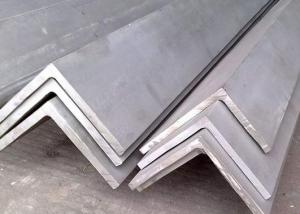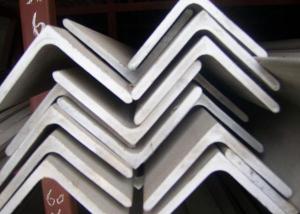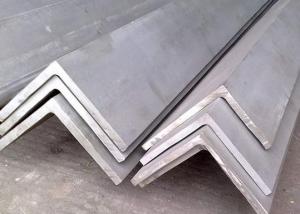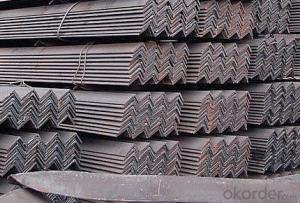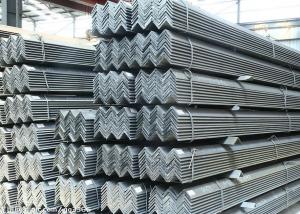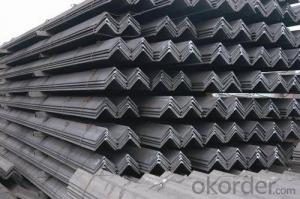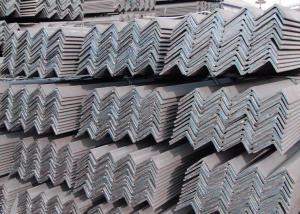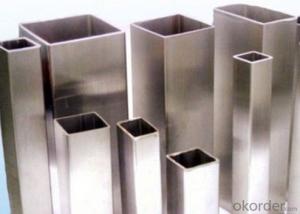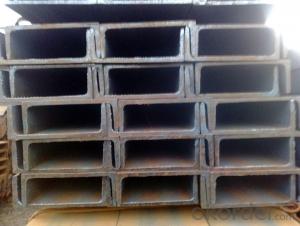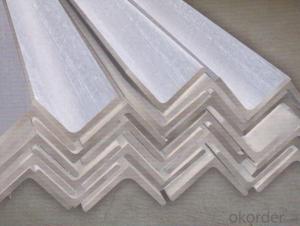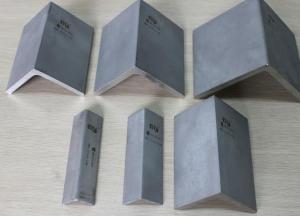High Quality Stainless Steel Angles
- Loading Port:
- Shanghai Port
- Payment Terms:
- TT or LC
- Min Order Qty:
- 5 Tons m.t.
- Supply Capability:
- 500 Tons m.t./month
OKorder Service Pledge
OKorder Financial Service
You Might Also Like
Stainless Steel Angles
1.Grade: SS200,300,400 series
2.Size: 25×25×3 mm-100×100×10mm
3.Process: HRAP
4. Length: 2-6m
5. Shape: Equal
6. Delivery: within 20 days
7. MOQ: 1 ton
8. Certificate: ISO 9001:2008, SGS
9. Package:Standard Export Packing, or put into wooden boxes according to your requirement
10. Application: Construction, Marine, Industry and so on
Name | Stainless Steel Angles | ||||||
Standard | ASTM A554, A312, A249, A269 and A270 | ||||||
Material Grade | 304,316,201,202, 316L,430 | ||||||
Length | 6m or as customers' request | ||||||
Tolerance | a) thickness: +/-0. 15mm | ||||||
| |||||||
b) Length:+/-4. 5mm - 0mm | |||||||
Surface | 180G, 320G, 400G Satin / Hairline(Matt Finish, Brush, Dull Finish) 400G, 500G, 600G or 800G Mirror finish | ||||||
Application | Decoration construction, upholstery, industry instruments | ||||||
Test | Squash test, Extended test, Water pressure test, Crystal rot test, Heat treatment, NDT | ||||||
Chemical Composition of Material |
Composition
Material | 201 | 202 | 304 | 316L | 430 | |
C | ≤0.15 | ≤0.15 | ≤0.08 | ≤0.08 | ≤0.12 | ||
Si | ≤1.00 | ≤1.00 | ≤1.00 | ≤1.00 | ≤1.00 | ||
Mn | 5.5-7.5 | 7.5-10 | ≤2.00 | ≤2.00 | ≤1.00 | ||
P | ≤0.06 | ≤0.06 | ≤0.045 | ≤0.045 | ≤0.040 | ||
S | ≤0.03 | ≤0.03 | ≤0.030 | ≤0.030 | ≤0.030 | ||
Cr | 16-18 | 17-19 | 18-20 | 16-18 | 16-18 | ||
Ni | 3.5-5.5 | 4-6 | 8-10.5 | 10-14 |
| ||
Mo |
|
|
| 2.0-3.0 |
| ||
Mechanical Property | Material Item | 201 | 202 | 304 | 316L | ||
Tensile Strength | ≥535 | ≥520 | ≥520 | ≥520 | |||
Yield Strength | ≥245 | ≥205 | ≥205 | ≥205 | |||
Extension | ≥30% | ≥30% | ≥35% | ≥35% | |||
Hardness (HV) | <253 | <253 | <200 | <200 | |||
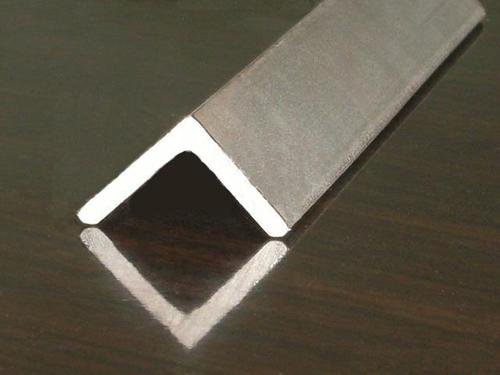
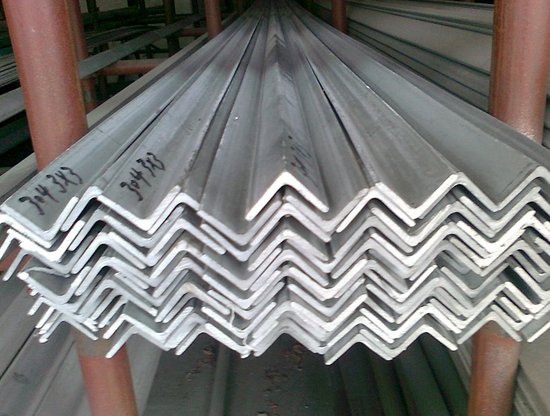
- Q: What are the different surface finishes for brushed stainless steel angles?
- Brushed stainless steel angles come in a variety of surface finishes. Some of the most commonly used finishes include: 1. Satin finish: This classic brushed finish provides a smooth, matte appearance. It involves brushing the stainless steel surface in a consistent linear pattern using a fine-grit abrasive material. 2. Hairline finish: Similar to the satin finish, this finish has a slightly finer texture. Achieved by using a finer abrasive material during the brushing process, it gives a more refined and elegant look. 3. Mirror finish: Also known as a polished finish, this treatment gives stainless steel angles a highly reflective and mirror-like appearance. It involves using progressively finer abrasive materials during the polishing process until the desired level of shine is achieved. 4. Bead blasted finish: This finish uses small glass beads or ceramic particles to blast the surface of the stainless steel angle. It creates a slightly textured matte appearance that is visually appealing and resistant to fingerprints and scratches. 5. Linen finish: Characterized by a pattern of fine parallel lines resembling linen fabric, this finish is achieved using a specialized abrasive material and specific brushing technique to create the desired pattern. These examples demonstrate the variety of surface finishes available for brushed stainless steel angles. The choice of finish depends on the desired aesthetic, functionality, and specific application of the angles.
- Q: How do stainless steel angles perform in saltwater environments?
- Stainless steel angles perform exceptionally well in saltwater environments due to their excellent corrosion resistance properties. The high levels of chromium present in stainless steel alloys form a protective oxide layer on the surface of the metal, which prevents rust and corrosion from occurring when exposed to saltwater. This oxide layer acts as a barrier, shielding the underlying steel from the corrosive effects of the saltwater environment. The corrosion resistance of stainless steel angles makes them highly resistant to pitting, crevice corrosion, and other forms of corrosion that can be caused by exposure to saltwater. This makes stainless steel angles a preferred choice for various applications in marine and coastal environments, such as shipbuilding, offshore structures, and coastal infrastructure. Additionally, stainless steel angles are durable and have a long lifespan, even when continuously exposed to saltwater. They are also resistant to UV radiation, extreme temperatures, and other environmental factors commonly found in saltwater environments. This durability ensures that stainless steel angles maintain their structural integrity and aesthetic appearance over time, making them a cost-effective choice for saltwater applications. In summary, stainless steel angles are highly suitable for use in saltwater environments due to their superior corrosion resistance, durability, and ability to withstand various environmental factors. They provide long-lasting performance, making them an ideal choice for marine and coastal applications.
- Q: How do stainless steel angles contribute to load distribution?
- Stainless steel angles play a significant role in load distribution due to their structural characteristics and design. These angles are L-shaped structural components that have two legs at a 90-degree angle, making them ideal for providing support and distributing loads efficiently. One of the primary ways stainless steel angles contribute to load distribution is through their ability to transfer and distribute weight or force across a structure. They can be used to connect and reinforce various components, such as beams, columns, and trusses, effectively redistributing and spreading the load to prevent localized stress concentrations. Additionally, stainless steel angles offer high strength and durability, making them capable of withstanding heavy loads and resisting deformation under pressure. Their robust construction allows them to bear significant weight without bending or breaking, ensuring load distribution is maintained even in demanding applications. Moreover, stainless steel angles are versatile and adaptable, making them suitable for a wide range of load-bearing applications in construction, infrastructure, and industrial sectors. They can be easily customized and fabricated to suit specific project requirements, allowing for efficient load distribution in various structural designs. In summary, stainless steel angles contribute to load distribution by providing structural support, transferring and redistributing weight or force, and ensuring load-bearing components remain strong and stable. Their strength, durability, and versatility make them an invaluable component in promoting safe and efficient load distribution in various construction and industrial applications.
- Q: What are the advantages of using stainless steel angles in kitchen appliances?
- Using stainless steel angles in kitchen appliances offers several advantages. Firstly, stainless steel is highly resistant to corrosion and rust, making it an ideal material for kitchen appliances. This resistance ensures that the appliances remain in good condition for a long time, even in a humid and moisture-filled environment like the kitchen. Secondly, stainless steel angles provide excellent strength and durability. They can withstand heavy loads and high temperatures without bending or warping, ensuring that the appliances remain sturdy and reliable. Additionally, stainless steel is a hygienic material. It is non-porous, which means it does not absorb moisture or bacteria, making it easy to clean and maintain. This is particularly important in the kitchen, where cleanliness and food safety are of utmost importance. Furthermore, stainless steel has a sleek and modern appearance that adds a touch of elegance to any kitchen. It is a versatile material that can be easily integrated into various appliance designs, enhancing the overall aesthetic appeal. Lastly, stainless steel is an environmentally friendly choice. It is a recyclable material, reducing waste and minimizing the environmental impact. By using stainless steel angles in kitchen appliances, homeowners can contribute to a more sustainable and eco-friendly lifestyle. In summary, the advantages of using stainless steel angles in kitchen appliances include corrosion resistance, strength and durability, hygienic properties, aesthetic appeal, and environmental friendliness. These benefits make stainless steel angles a popular and practical choice for kitchen appliances.
- Q: Can stainless steel angles be used in chemical processing industries?
- Yes, stainless steel angles can be used in chemical processing industries. Stainless steel is highly resistant to corrosion and has excellent strength and durability, making it suitable for handling various chemicals and corrosive substances in industrial settings. Additionally, stainless steel angles can withstand high temperatures and pressures, making them an ideal choice for chemical processing applications.
- Q: What is the thermal expansion coefficient of stainless steel angles?
- The thermal expansion coefficient of stainless steel angles typically ranges from 10 to 17 x 10^-6 per degree Celsius.
- Q: Can stainless steel angles be used in water treatment applications?
- Yes, stainless steel angles can be used in water treatment applications. Stainless steel is highly resistant to corrosion and has excellent strength and durability, making it a suitable material for various water treatment processes such as filtration, purification, and wastewater treatment. Its resistance to rust and chemical reactions ensures the longevity and reliability of stainless steel angles in water treatment systems.
- Q: What are the different grades of stainless steel angles?
- Stainless steel angles find wide usage across various industries and applications due to their durability and resistance to corrosion. Different grades of stainless steel angles are available, each possessing its own distinct properties. One frequently employed grade of stainless steel angles is 304, renowned for its exceptional corrosion resistance in diverse environments, including those exposed to chemicals, acidic substances, and saltwater. It also exhibits high resistance to oxidation and can endure elevated temperatures. 304 stainless steel angles are commonly employed in food processing equipment, chemical tanks, architectural applications, and more. Another favored grade is 316 stainless steel angles, offering even greater corrosion resistance than 304, particularly against chlorides and other harsh chemicals. It is often utilized in marine environments, as well as in industries like pharmaceuticals, oil and gas, and chemical processing. 316 stainless steel angles also demonstrate remarkable strength and durability, rendering them suitable for structural applications. Additional grades of stainless steel angles include 430, a ferritic grade renowned for its good formability and resistance to oxidation, albeit with lower corrosion resistance compared to 304 and 316. Duplex stainless steel angles, like grades 2205 and 2507, present a combination of high strength, corrosion resistance, and toughness. These grades are frequently employed in industries where both strength and resistance to corrosion are vital, such as offshore oil and gas platforms. When selecting the grade of stainless steel angles, it is crucial to consider the specific requirements of your application. Factors such as the environment, temperature, and intended use will influence the most suitable grade. Seeking guidance from a stainless steel supplier or engineer can ensure the appropriate grade is chosen for your needs.
- Q: Are stainless steel angles resistant to staining?
- Yes, stainless steel angles are resistant to staining. Stainless steel is known for its excellent corrosion resistance and ability to withstand various environmental conditions. It contains chromium, which forms a protective layer on the surface of the steel, preventing it from rusting or staining. This makes stainless steel angles highly resistant to staining caused by exposure to moisture, chemicals, or other contaminants. Additionally, stainless steel angles can be easily cleaned and maintained, ensuring their long-lasting resistance to staining.
- Q: How do stainless steel angles contribute to the durability of a structure?
- Stainless steel angles play a crucial role in enhancing the durability of a structure due to their unique properties and characteristics. Firstly, stainless steel is highly resistant to corrosion and rust, making it ideal for use in structures exposed to harsh environmental conditions or moisture, such as outdoor structures or buildings near coastal areas. This corrosion resistance ensures that the angles retain their strength and structural integrity over time, reducing the need for frequent repairs or replacements. Moreover, stainless steel angles possess excellent strength-to-weight ratio, meaning that they offer high strength while being relatively lightweight. This characteristic allows for the construction of structures that can withstand heavy loads and stresses, ensuring the longevity and durability of the overall structure. Additionally, stainless steel angles have exceptional heat resistance, enabling them to retain their strength and shape even under high temperatures. This is particularly important in structures that may be exposed to extreme heat, such as industrial facilities or buildings with mechanical systems. The heat resistance of stainless steel angles prevents deformation or weakening, contributing to the long-term durability of the structure. Furthermore, stainless steel angles have a high degree of impact resistance, meaning they can withstand sudden loads or shock without undergoing permanent deformation. This property makes them suitable for use in structures that may experience impact or vibration, such as bridges or platforms, where durability is of utmost importance. Lastly, stainless steel angles are easy to maintain and clean, as they do not require painting or coatings to protect against corrosion. This reduces the maintenance costs associated with the structure, saving both time and money while ensuring its durability for years to come. In summary, stainless steel angles contribute significantly to the durability of a structure through their corrosion resistance, high strength-to-weight ratio, heat resistance, impact resistance, and ease of maintenance. These properties make stainless steel angles an excellent choice for construction, ensuring the long-term durability and reliability of the structure.
1. Manufacturer Overview
| Location | Jiangsu,China |
| Year Established | 2002 |
| Annual Output Value | Above US$ 8 Million |
| Main Markets | China, East Asia, |
| Company Certifications | ISO9001:2000; |
2. Manufacturer Certificates
| a) Certification Name | |
| Range | |
| Reference | |
| Validity Period |
3. Manufacturer Capability
| a) Trade Capacity | |
| Nearest Port | Shanghai |
| Export Percentage | 40% |
| No.of Employees in Trade Department | 30 People |
| Language Spoken: | English;Chinese |
| b) Factory Information | |
| Factory Size: | Above 26,000 square meters |
| No. of Production Lines | Above 6 |
| Contract Manufacturing | OEM Service Offered;Design Service Offered |
| Product Price Range | Average |
Send your message to us
High Quality Stainless Steel Angles
- Loading Port:
- Shanghai Port
- Payment Terms:
- TT or LC
- Min Order Qty:
- 5 Tons m.t.
- Supply Capability:
- 500 Tons m.t./month
OKorder Service Pledge
OKorder Financial Service
Similar products
Hot products
Hot Searches
Related keywords
